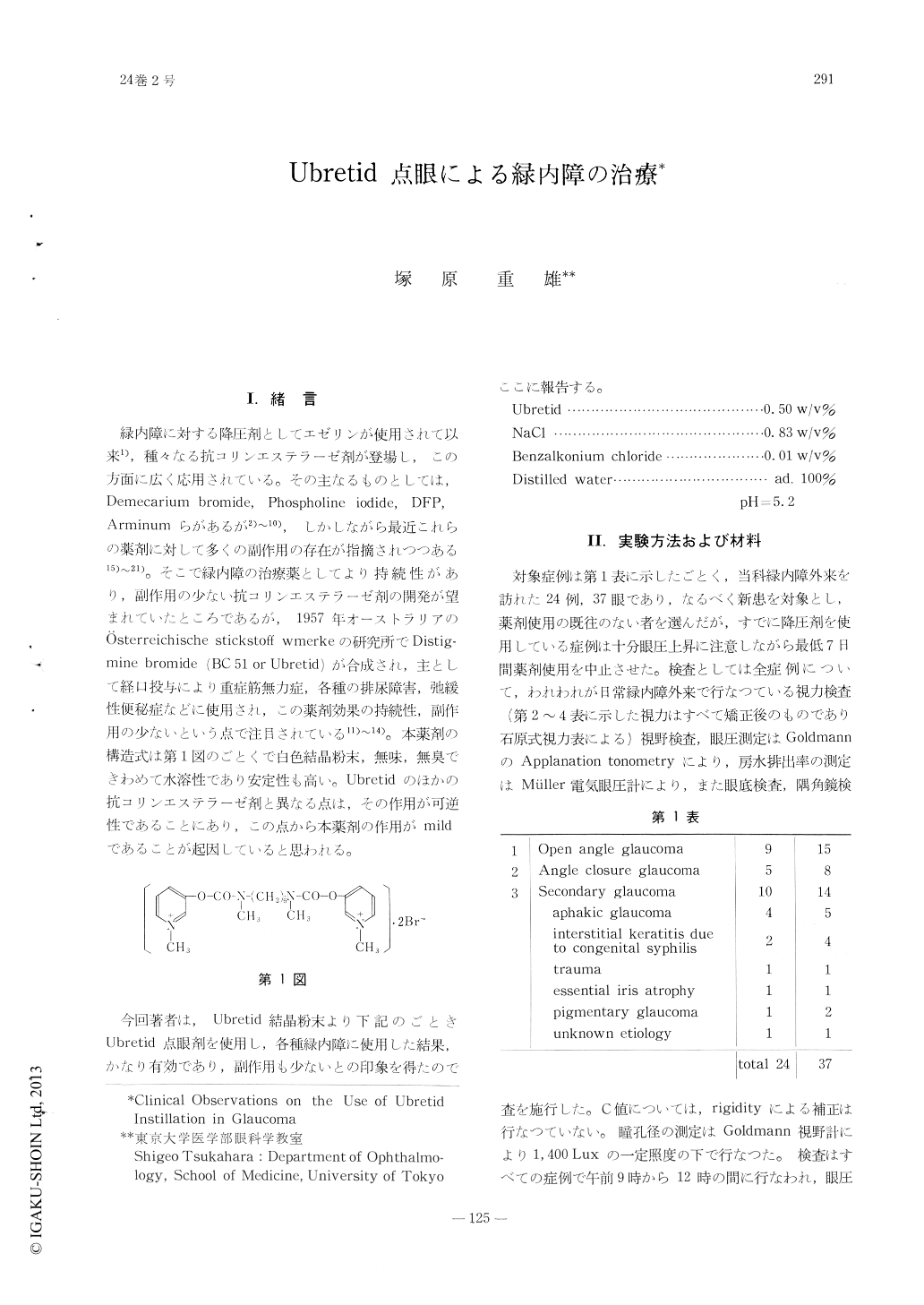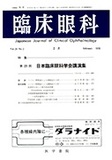Japanese
English
- 有料閲覧
- Abstract 文献概要
- 1ページ目 Look Inside
I.緒言
緑内障に対する降圧剤としてエゼリンが使用されて以来1),種々なる抗コリンエステラーゼ剤が登場し,この方面に広く応用されている。その主なるものとしては,Demecarium bromide, Phospholine iodide, DFP,Arminumらがあるが2)〜10),しかしながら最近これらの薬剤に対して多くの副作用の存在が指摘されつつある15)〜21)。そこで緑内障の治療薬としてより持続性があり,副作用の少ない抗コリンエステラーゼ剤の開発が望まれていたところであるが,1957年オーストラリアのÖsterreichische stickstoff wmerkeの研究所でDistig—mine bromide (BC 51 or Ubretid)が合成され,主として経口投与により重症筋無力症,各種の排尿障害,弛緩性便秘症などに使用され,この薬剤効果の持続性,副作用の少ないという点で注目されている11)〜14)。本薬剤の構造式は第1図のごとくで白色結晶粉末,無味,無臭できわめて水溶性であり安定性も高い。Ubretidのほかの抗コリンエステラーゼ剤と異なる点は,その作用が可逆性であることにあり,この点から本薬剤の作用がmildであることが起因していると思われる。
An ophthalmic solution ( 1%) of Ubretid, a new reversible cholinesterase inhibitor, was prepared and the effects of its topical application were tested on glaucoma.
In open angle glaucoma, a reduction of IOP and an increase of C-value were observed in 11 out of 15 eyes. In angle closure glaucoma, a similar response was obtained in 5 out of 8 eyes. In secondary glaucoma, a favourable response was observed in 7 out of 14 eyes.
Side reactions of the drug was few and not so serious. In all cases of sustained use, neither iris cyst nor serious systemic reaction were observed.

Copyright © 1970, Igaku-Shoin Ltd. All rights reserved.


